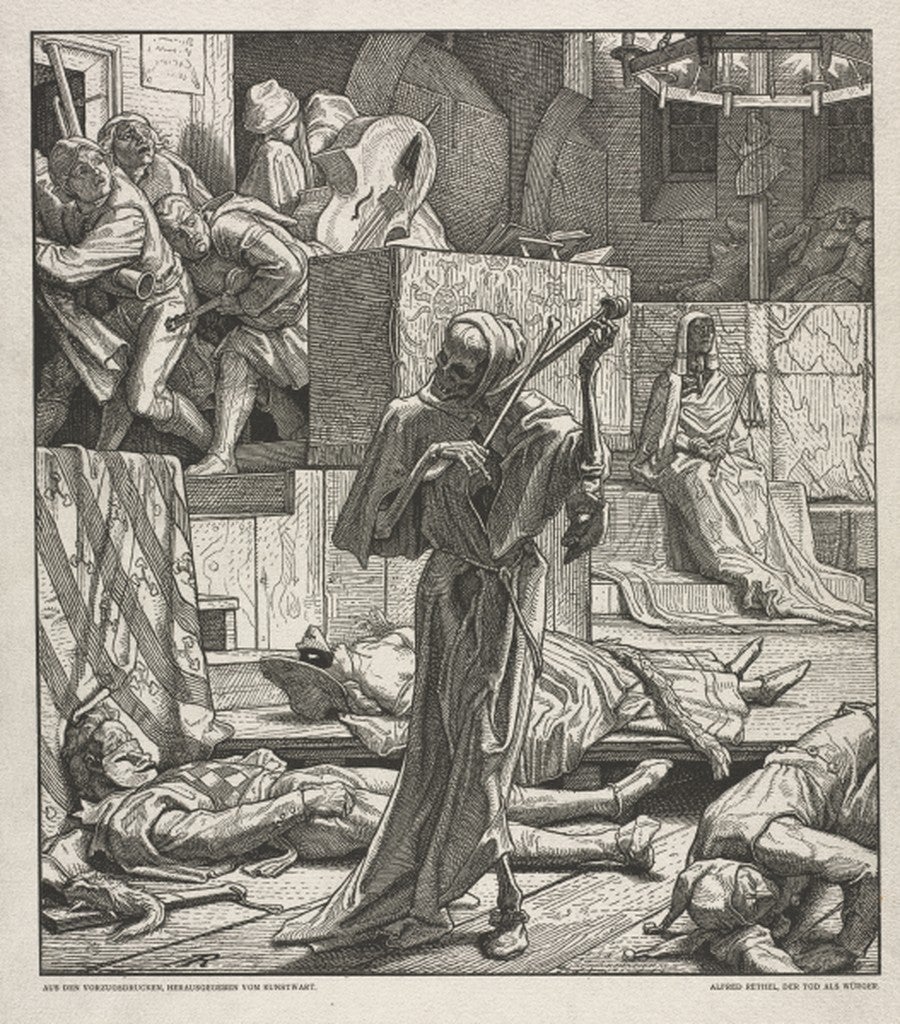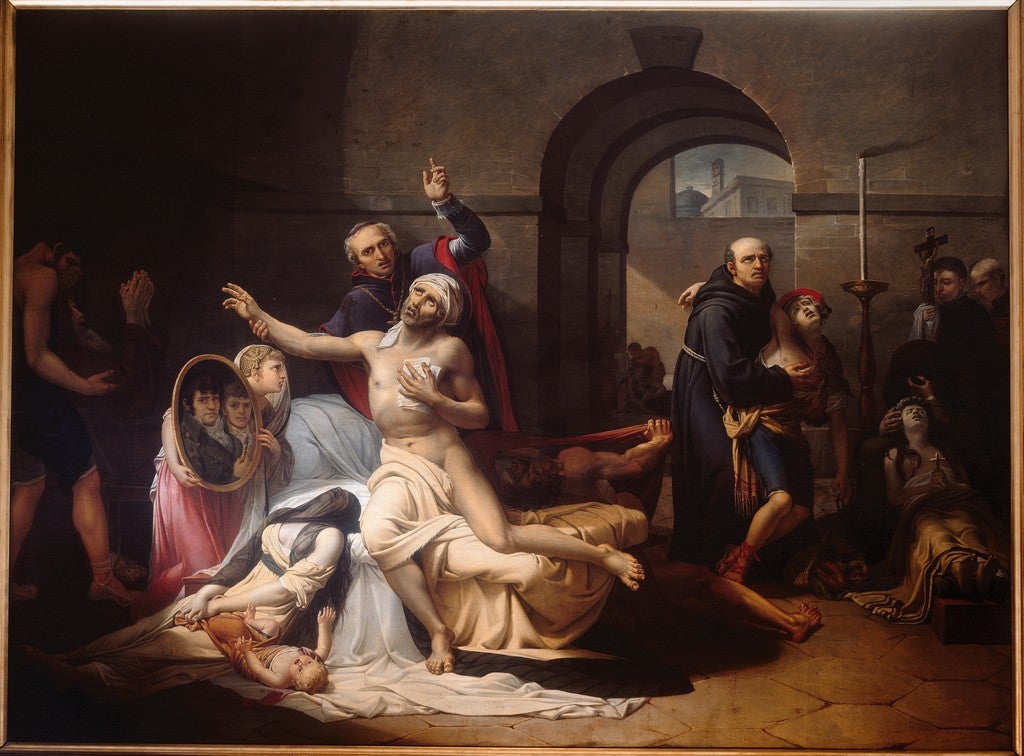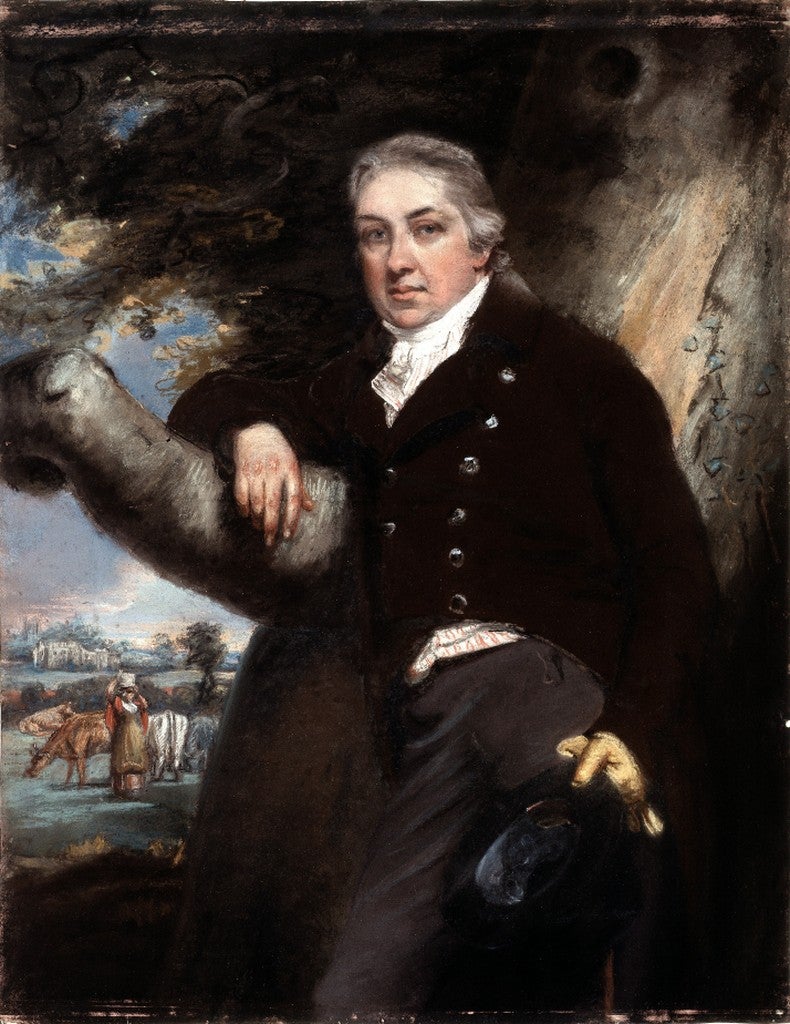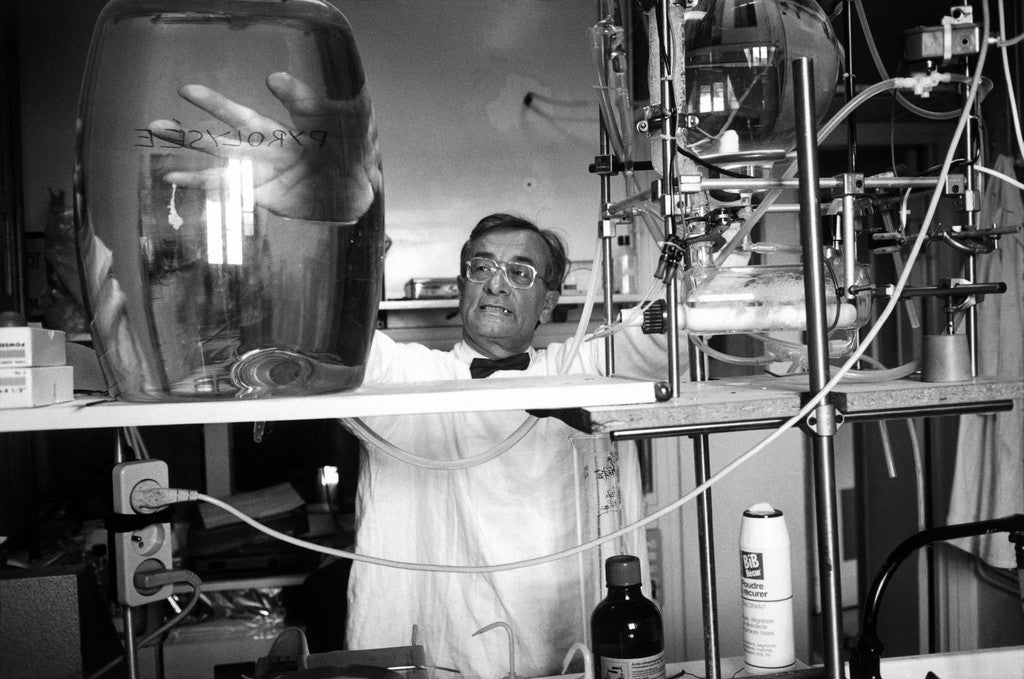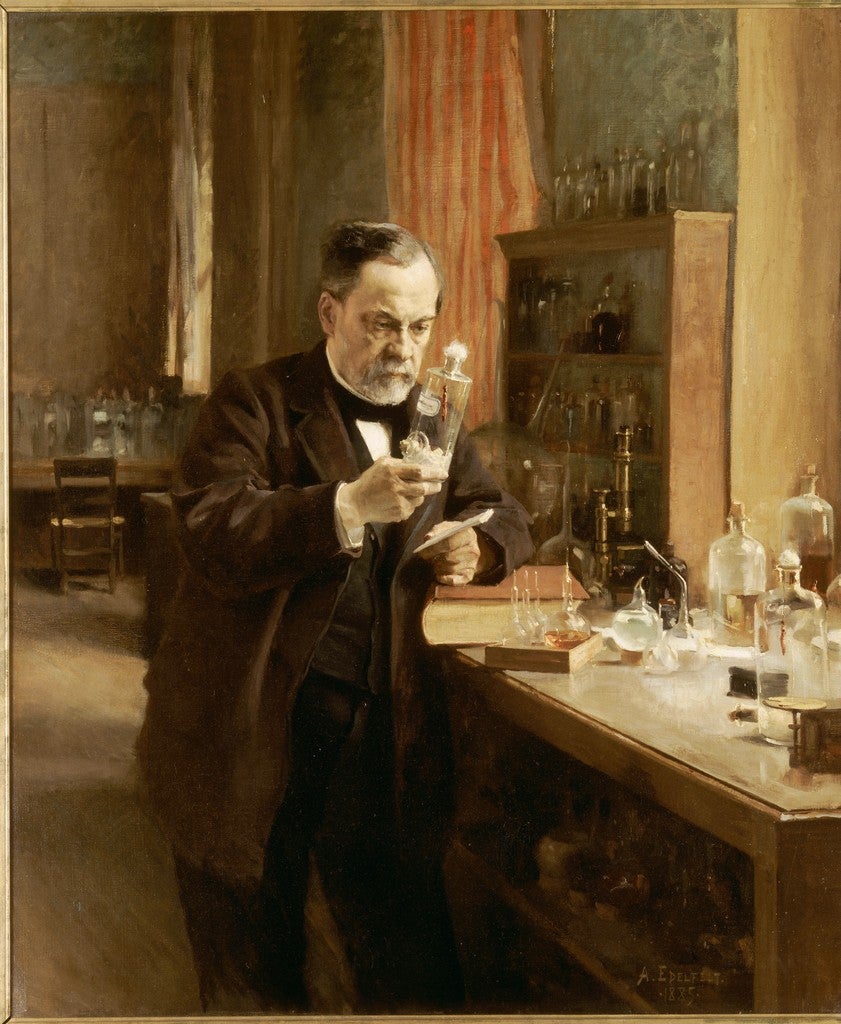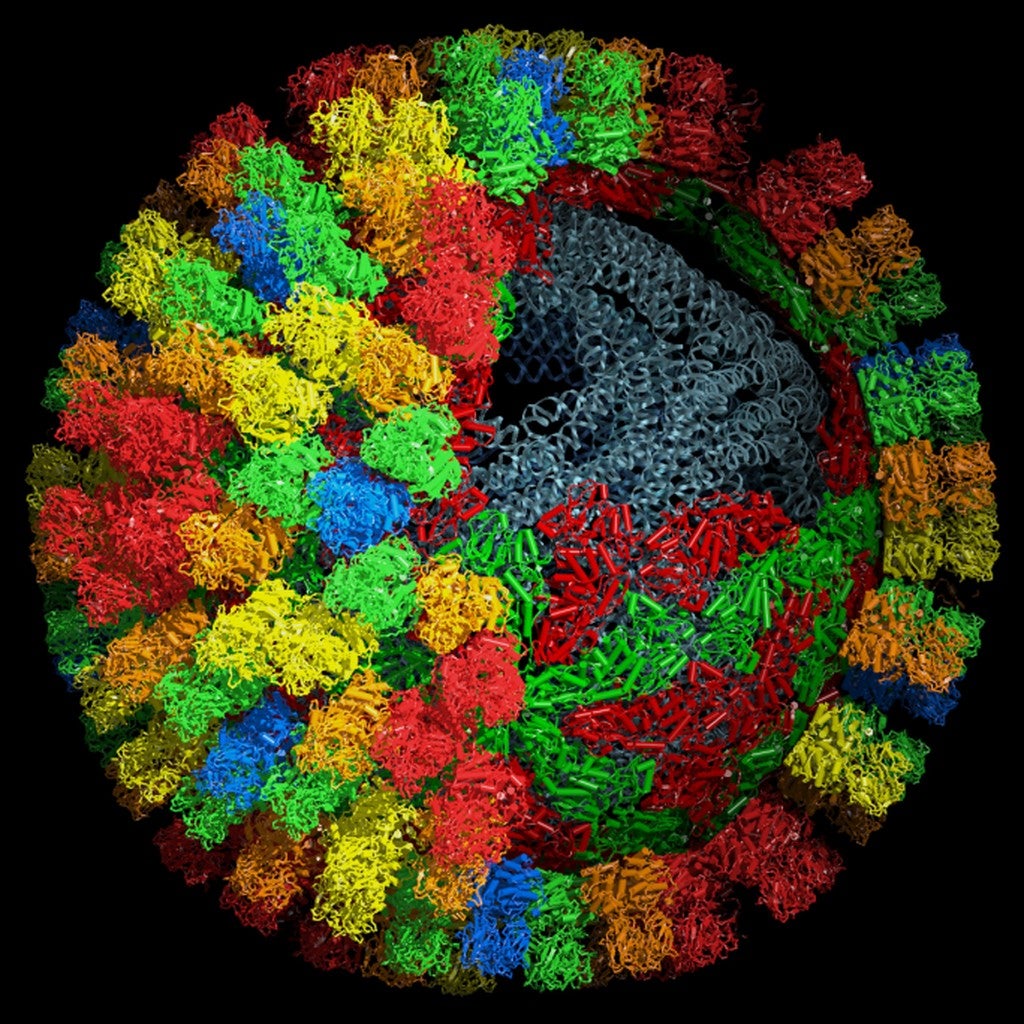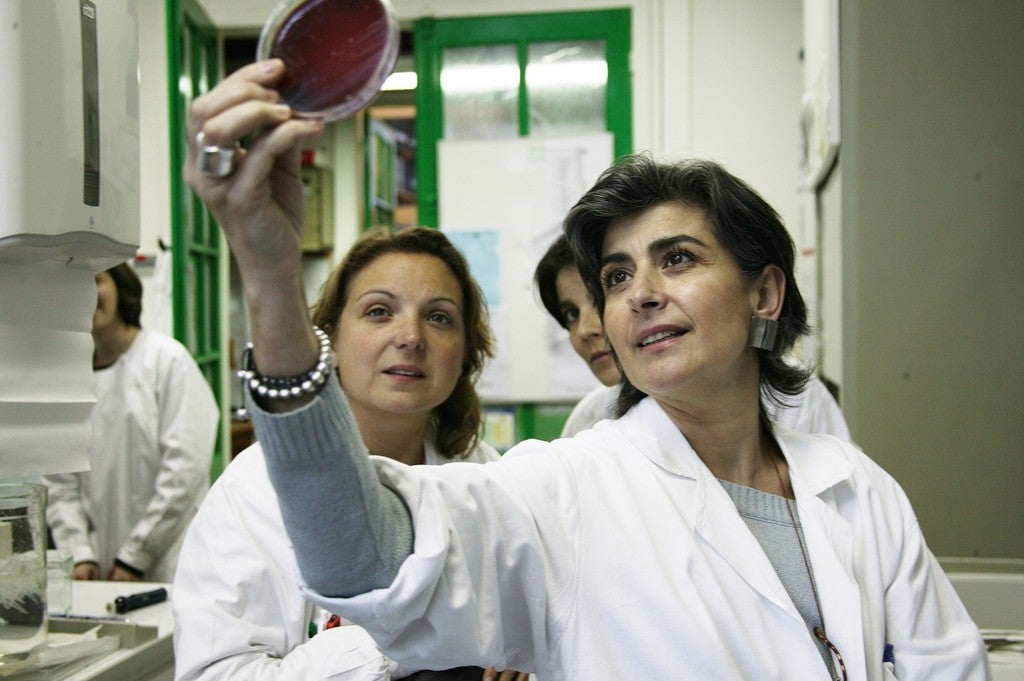More than 2 million of the images in Artstor are now discoverable alongside JSTOR’s vast scholarly content, providing you with primary sources and vital critical and historical background on one platform. This blog post is one of a series demonstrating how the two resources complement each other, providing a richer, deeper research experience in all disciplines.
There have been as many plagues as wars in history; yet always plagues and wars take people equally by surprise.
— Albert Camus, The Plague, 1948
Explore the full Pandemics and Epidemics image group in Artstor
The rapid rise of the COVID-19 pandemic1 is a stark reminder that humanity is still susceptible to infectious diseases. Despite the successes of modern medicine, communicable diseases continue to impact our health, our economies, and our communities.
We now understand the science behind the invisible agents that cause disease, but to those in the past, contagions seemed like an act of God. When the bubonic plague swept through the Byzantine Empire, it set off mass hysteria. Millions were indiscriminately struck down; one historian feared “the whole human race was being annihilated.” The Black Death that raged from the 14th to 18th centuries took half of the European population and sparked religious revivals and witch hunts. Before the next plague in Asia ended in 1950, 20 million had died; it also prompted the rise of xenophobia in the U.S.
Such catastrophic events brought about the beginnings of public health measures, notably quarantine and social distancing. They also led to advances in medicine as healers searched for life-saving treatments. One of the most effective tools they found were inoculations.
Explore the full Vaccinations image group on Artstor
Edward Jenner is considered a pioneer for his work on the smallpox vaccination. In the 18th century, the “speckled monster” was blamed for almost 10% of England’s deaths; those who survived were often disfigured or blinded. Jenner experimented with cowpox after observing that milkmaids seemed to be immune. His “cow cure” was often ridiculed, but it is now recognized as a medical breakthrough.
It was nearly a century after Jenner’s discovery that Louis Pasteur experimented with a second human vaccination. In 1885, a boy who had been badly bitten by dogs was rushed to Pasteur’s laboratory. Despite misgivings, he administered a series of inoculations that saved the boy’s life. This first documented rabies vaccine proved the value of Pasteur’s work in microbiology. It also led to the establishment of the Pasteur Institute and manufacture of numerous vaccines.
Pasteur’s germ theory was used for vaccines preventing diseases such as polio, measles, diphtheria, tetanus, mumps, pertussis, and rubella. Germ theories were also the basis for public health initiatives to ensure clean drinking water, improve sanitation, and sanitize food preparation (such as pasteurization). As a result, life expectancies began to improve.
Medicine underwent another revolution when Howard Florey and a team of researchers at Oxford were able to produce penicillin just in time to supply the troops in World War II. Antibiotics were hailed as a modern miracle; doctors were able to cure diseases once thought untreatable. George Marshall, the U.S. Secretary of State, expressed the hopes of many in 1948 when he declared they had the means to eradicate infectious diseases from the earth.
Explore the full Viruses image group in Artstor
That optimism has been challenged in recent decades as microorganisms have mutated or found different habitats. There are new threats from zoonotic diseases — when an infectious agent moves from animal to humans — as with recent epidemics of avian (bird) flu, SARS, and the Ebola hemorrhagic fever. HIV/AIDS is a viral strain that jumped from primates to humans with deadly consequences. From the 1980s, when it was first discovered, until 2018, HIV is estimated to have caused 32 million deaths.
The promise of antibiotics now seems premature; they have not only been over-prescribed, but overused. In animal farming alone, it is estimated that between 65,000 and 250,000 tons of antibiotics are used annually. Diseases are becoming resistant; tuberculosis, which was once on track to be eliminated, is now considered the most persistent pandemic of our time.
People around the world are increasingly interconnected, expediting the spread of infection. International travel is on the rise; cities are growing denser given the rapid increase in urbanization. There are great numbers of displaced populations due to factors ranging from climate change to political instability.
Just as we face new challenges, we have resources never available before. As these microorganisms have evolved, so has medical technology. Advances in genetics, medical imaging, AI, and computer modeling have given scientists new means for investigating and defeating disease. Those in the front lines of public health have adapted preventative measures to stay ahead of epidemics. Most significantly, there is a growing awareness that global healthcare touches all of us.
The Ebola crisis of 2014/15 exposed a public health system under stress. Many of the world’s economic groups took note; they realized there was a self-interest in preventing such a crisis. The World Bank estimated that disease outbreaks cost the global community an average of 30 billion U.S. dollars annually. As totals climb for the current pandemic, the risk analysis may convince international leaders to create counter strategies for this growing need.
— Lee Caron, Editor, Primary Sources
1 The Merriam-Webster dictionary defines “pandemic” as “an outbreak of a disease that occurs over a wide geographic area and affects an exceptionally high proportion of the population” and “epidemic” as “an outbreak of disease that spreads quickly and affects many individuals at the same time.”
Reading from JSTOR:
Henderson, Donald A. “Edward Jenner’s Vaccine.” Public Health Reports (1974-), vol. 112, no. 2, 1997, pp. 116–121. JSTOR, www.jstor.org/stable/4598107.
Kaufmann, Stefan H.E. “The New Plagues: Pandemics and Poverty in a Globalised World.” A Sustainable Future: 12 Key Areas of Global Concern, edited by Klaus Wiegandt, Haus Publishing, London, 2017, pp. 327–358. JSTOR, www.jstor.org/stable/j.ctt1zxxxpj.14.
Redd, Stephen C., et al. “Foreword: 1918 AND 2009 A Tale of Two Pandemics.” Public Health Reports (1974-), vol. 125, 2010, pp. 3–5. JSTOR, www.jstor.org/stable/41435293.
Schneider, Dona, and David E. Lilienfeld, editors. “Vaccine-Preventable Diseases.” Public Health: The Development of a Discipline, Twentieth-Century Challenges, Rutgers University Press, New Brunswick, New Jersey; London, 2011, pp. 433–474. JSTOR, www.jstor.org/stable/j.ctt1bqzmxz.17.
“Overview of the Three Plague Pandemics: 541 to ca. 1950.” Epidemics and Society: From the Black Death to the Present, by Frank M. Snowden, Yale University Press, New Haven; London, 2019, pp. 28–39. JSTOR, www.jstor.org/stable/j.ctvqc6gg5.8.
“Emerging and Reemerging Diseases.” Epidemics and Society: From the Black Death to the Present, by Frank M. Snowden, Yale University Press, New Haven; London, 2019, pp. 448–465. JSTOR, www.jstor.org/stable/j.ctvqc6gg5.26.
Stein, Richard A. “Vaccination: A Public Health Intervention That Changed History & Is Changing with History.” The American Biology Teacher, vol. 73, no. 9, 2011, pp. 513–519. JSTOR, www.jstor.org/stable/10.1525/abt.2011.73.9.3.
